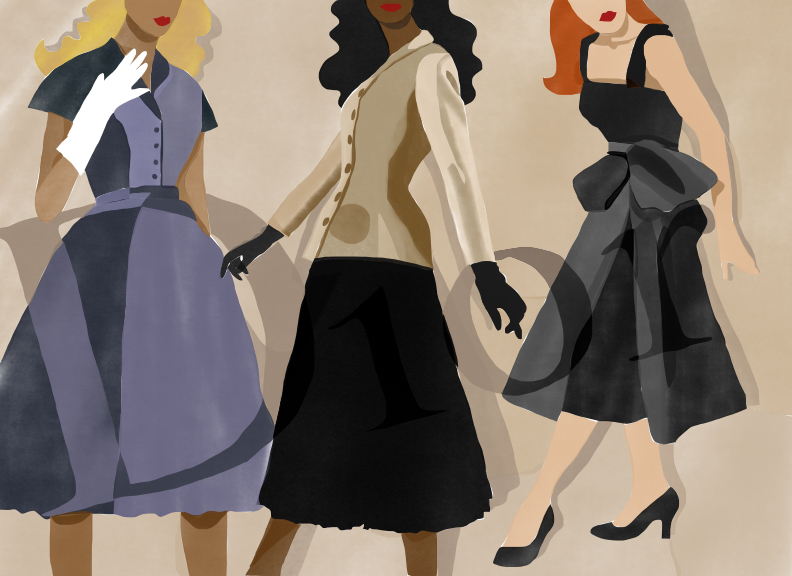Over time, the fashion industry has grown to rely on brand recognition to drive popularity and sales. Fashion houses such as Chanel, Yves Saint Laurent, Louis Vuitton, Gucci, and Dior have long remained in the cultural consciousness because they—quite literally—made a name for themselves. Backed by full-monogram outfits, celebrity brand ambassadors, and rap songs that pair haute couture with wealth, the influence of these fashion houses is undeniable. Amidst the rise of mass-produced fashion, however, the small world of haute couture has started to lose its original meaning. The Christian Dior fashion exhibit, on display until May 2 at the McCord Museum, brings the history of haute couture and the prestige of names back to the forefront.
Haute couture refers to a style of clothing that is tailor-made and hand-sewn for the client. Charles Frederick Worth cemented the term as an expression of the dressmaker’s artistic vision in the 19th century, and founded what is now the Fédération de la Haute Couture et de la Mode. In contrast, ready-to-wear clothing is mass-produced in a standard set of sizes for public consumption. Only certain fashion houses qualify to be on the official haute couture list, and those that do so use their haute couture lines as outlets for creativity and innovation while relying on their commercial ready-to-wear lines to survive financially.
The Christian Dior exhibit seamlessly guides its visitors through the first decade (1947-1957) of the House of Dior. This decade defined the house’s present-day aesthetic values and influences, and Dior’s first haute couture line, dubbed the “New Look,” revolutionized women’s fashion and brought it out of the gloomy styles of World War II. With men fighting in the war and rations limiting access to finer fabrics, women wore industrial, masculine styles in simple, monochrome colours and patterns.
The garments on display at Christian Dior are anything but conventionally masculine. Dior’s seminal “Bar jacket,” featured in many of the daytime outfits at the start of the exhibit, marked a return to traditional feminine styles and lines. The jacket, along with the matching long and flowy A-line skirts, emphasizes the waist and slims the shoulders. It brought womenswear firmly into the postwar era—think Betty Draper in Mad Men. Although culturally significant both then and now, the daytime suits and dresses are not the star of the show—that title is reserved for the evening gowns, presented in full glory at the end of the exhibit.
One gown in particular stands out from the rest: A strapless dress Dior affectionately named Palmyre. The white satin is covered with incredible embroidery of fine threads, beads, and Swarovski crystals in stunning silver and blue. The seamstresses who created the gown used the “Lunéville technique,” a blind stitch in which the beads, sequins, and crystals are hidden from view. Although it may seem counterintuitive to embroider a garment on its reverse side, this technique allows the couturiers to work faster.
In addition to the garments, Christian Dior features documentary video clips, sketches, jewellery, shoes, perfumes, and other accessories, creating a complete tour of Dior’s foundational years. From a modern point of view, the exhibit is deceptively simple—it is no match for the eclectic, innovative, and boundary-breaking works of Alexander McQueen and Rei Kawakubo’s ready-to-wear collections. However, the historical significance of Dior’s work in post-war France cannot be emphasized enough. By reinventing fashion aesthetics for society’s elite, Dior brought an entire industry back from the brink of extinction. Whether or not Dior’s current work under Maria Grazia Chiuri lives up to his legacy is of little importance: Christian Dior has already left his mark in the history of fashion.
Christian Dior runs until May 2 at the McCord Museum (690 Sherbrooke St W). In-person student tickets $14, virtual tours $8.50.








